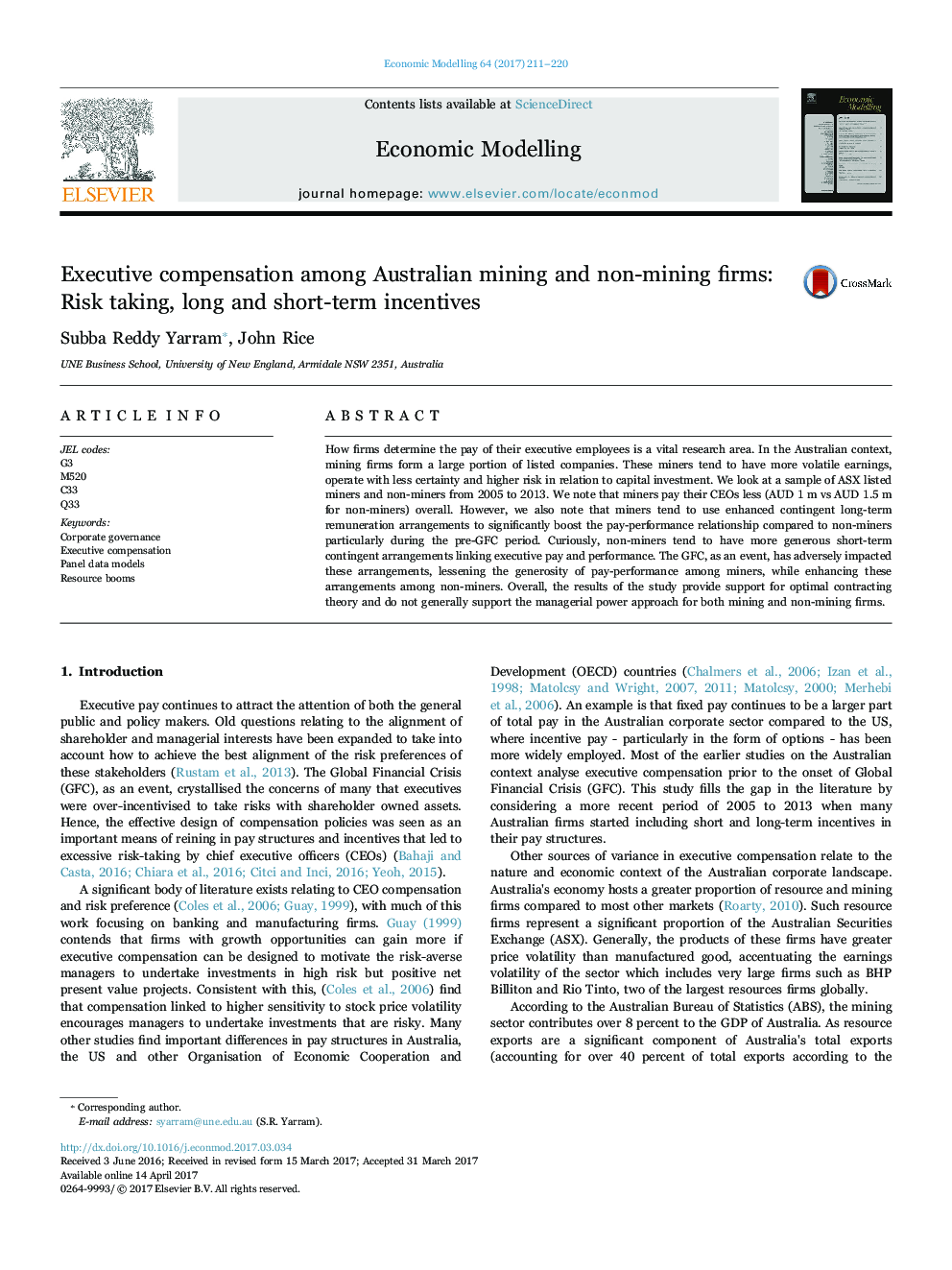| Article ID | Journal | Published Year | Pages | File Type |
|---|---|---|---|---|
| 5053145 | Economic Modelling | 2017 | 10 Pages |
â¢Do mining firms incentivise their executives differently from that of the non-mining firms?â¢CEO compensation levels are higher for non-mining Australian firms compared to Australian mining firms.â¢Mining firms seek to lock in senior executives with greater long-term contingent remuneration specifically in the pre-GFC period.â¢Pay-performance sensitivities have declined in the post-GFC period for mining executives - perhaps caused by lower profits.â¢The results do not provide a strong evidence of the managerial power theory on the incentive pay setting of Australian mining as well as non-mining firms.
How firms determine the pay of their executive employees is a vital research area. In the Australian context, mining firms form a large portion of listed companies. These miners tend to have more volatile earnings, operate with less certainty and higher risk in relation to capital investment. We look at a sample of ASX listed miners and non-miners from 2005 to 2013. We note that miners pay their CEOs less (AUD 1Â m vs AUD 1.5Â m for non-miners) overall. However, we also note that miners tend to use enhanced contingent long-term remuneration arrangements to significantly boost the pay-performance relationship compared to non-miners particularly during the pre-GFC period. Curiously, non-miners tend to have more generous short-term contingent arrangements linking executive pay and performance. The GFC, as an event, has adversely impacted these arrangements, lessening the generosity of pay-performance among miners, while enhancing these arrangements among non-miners. Overall, the results of the study provide support for optimal contracting theory and do not generally support the managerial power approach for both mining and non-mining firms.
